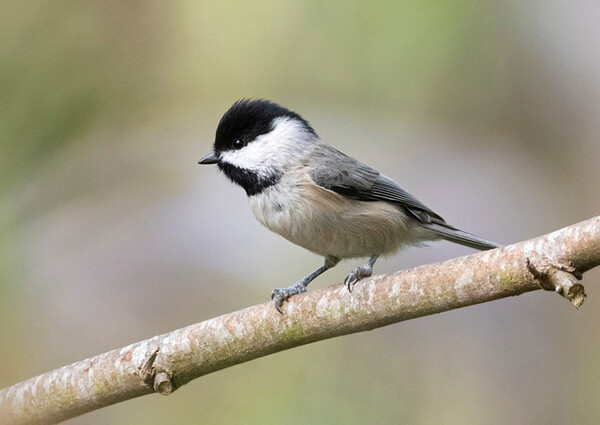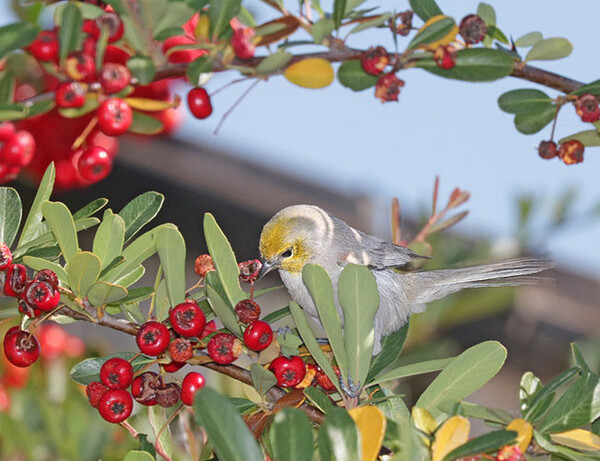- Details
-
Published: Wednesday, 21 October 2020 10:24
 South Padre Island is beautiful this time of year – and the temperatures just keep getting nicer as we get closer to December. I had the chance to take a short trip to the island recently and I did not want to leave. The temperatures were in the 80s and there was a pretty good breeze the day I went. I, unfortunately, had to get back to the office, and home, to tend to other things and could not stay as long as I wanted to.
South Padre Island is beautiful this time of year – and the temperatures just keep getting nicer as we get closer to December. I had the chance to take a short trip to the island recently and I did not want to leave. The temperatures were in the 80s and there was a pretty good breeze the day I went. I, unfortunately, had to get back to the office, and home, to tend to other things and could not stay as long as I wanted to.
This short trip was to see a perfect outdoor activity for this type of weather – the Sea Turtle Trail. The Winter Texan Times had received a news release from SPI’s Convention and Visitor’s Bureau about a recent installment to the trail and decided it was something we needed to go out and see for ourselves. This is a trail that you can walk or cycle if you have the time. The locations are spread out on the island – furthest point south is Beach Park at Isla Blanca, and northern point is SPI Convention Center. They are nearly five miles apart from each other. I was able to visit all but two turtles while there and was quite impressed with the beauty of them.
So, what are these turtles I speak of?
Read more: Beautiful weather for a trip to SPI
- Details
-
Published: Wednesday, 21 October 2020 10:18
By Carina A. Brunson
Hello and welcome back to south Texas! We are so happy to see your smiling … eyes. We are so excited about what this year will bring, even if it will be a bit different. The Rio Grande Valley is such a great place to be. Great weather, great people, and great friends. I am with y’all, I would much rather be in Texas than shoveling snow up north.
Read more: Welcome back
- Details
-
Published: Monday, 12 October 2020 15:30
 The Winter Texan Times has been preparing for the 2020-2021 season and we are excited to see our Winter Texans returning. Our first issue will be published on October 21, and the deadline to submit items for this issue is Wednesday, October 14.
The Winter Texan Times has been preparing for the 2020-2021 season and we are excited to see our Winter Texans returning. Our first issue will be published on October 21, and the deadline to submit items for this issue is Wednesday, October 14.
Read more: Winter Texan Times begins 34th season October 21
- Details
-
Published: Friday, 02 October 2020 10:42
The Humane Society of Harlingen is reaching capacity and is in need of urgent adoptive or foster parents to make space for emergency intakes. Lifesaving is only made possible through collaborative efforts with the community.
Here is how you can help:
1. Adopt or Foster. All adoption fees for all animals will be completely waived and completed on a donation basis until further notice. There is never a fee to foster and, for a limited time, all animals are available for foster! We will even give you everything you need to get started with your new furry friend.
Read more: Humane Society of Harlingen in need of adoptive or foster parents
- Details
-
Published: Friday, 11 September 2020 11:53
What a surprise! Say hello to the Gladys Porter Zoo’s new miracle baby…a baby gorilla! Penney, a 33-year-old female gorilla, to everyone's surprise, gave birth to a healthy baby on Thursday, August 20.
Night keepers at the Zoo were astonished to find Penney cradling a newborn in her arms as they were making their usual rounds on Thursday evening. Not only were the night keepers shocked but so was the entire Zoo staff, especially the Zoo’s medical team. This was totally unexpected.
“Years ago, when evaluating Penney for her lack of reproductive success, it was discovered that she had a tumor on her pituitary gland that, in turn, raised her prolactin levels, making it difficult for her to conceive. Thanks to a 45-day, targeted treatment, she was able to reproduce once after the tumor diagnosis was made,” said Gladys Porter Zoo Director, Dr. Patrick Burchfield.
Read more: Miracle Baby Born at Gladys Porter Zoo!
- Details
-
Published: Friday, 11 September 2020 09:46
 Written by Susan Himes, Susan.Himes@ag.tamu.edu
Written by Susan Himes, Susan.Himes@ag.tamu.edu
The Texas A&M AgriLife Extension Service announced registration is open for the 2021 Birding the Border event.
The event will take place April 29 -May 2, starting with a kickoff social the evening of April 29 at Val Verde Winery.
Del Rio will host the event, which will feature birding trips to a mix of private, restricted-access and public lands in Kinney and Val Verde counties.
The cost of registration is $50 and includes seminars, which will be held April 30-May 1 at the Del Rio Civic Center and feature AgriLife Extension experts. There are also spouse-of-birder passes available to allow participants to bring a plus one to the seminars and social events. If you prefer to register by phone, call Teri Gaston at 830-278-9151 ext. 283.
Read more: Four-day birding event features photography-focused, beginner options
- Details
-
Published: Thursday, 10 September 2020 19:41
 by Melinda Myers
by Melinda Myers
As summer transitions into fall, it is time to help lawns recover from summer stress. Let the weather and the condition of your lawn help you develop a plan suited to your landscape.
Continue mowing actively growing lawns. Mow high, leaving cool season grasses like bluegrass and fescues at least 2 ½ preferably 3 ½ inches tall after cutting. Warm season grasses like bermudagrass, carpetgrass, centipedegrass and zoysia should be grown at 1 to 2 inches tall, while St. Augustine should a bit higher at 2 to 3 inches for best results. Taller grass is better able to compete with weeds, is more drought tolerant and less susceptible to insects and disease.
Read more: Fall Lawn Care Tips
- Details
-
Published: Tuesday, 25 August 2020 18:37
Check out what’s making a splash at the Gladys Porter Zoo these days . . . North American river otters! Tallulah and Imnaha will be making their public debut in their brand new exhibit on August 28th. Construction of their new habitat is expected to be completed this week and the Zoo’s staff can’t wait to see how much they love their new hangout.
Three year-olds Imnaha and Tallulah are sisters from the same litter. They were born at the Oakland Zoo in California. Just like humans, they have their own unique personalities – one is shy and one is a bit of a troublemaker. But together, they manage to get into all kinds of fun and mischief.
North American river otters are semi-aquatic mammals that spend most of their time in the water. They have thick, protective fur to help them keep warm while swimming in cold waters. They have short legs, webbed feet, and long, streamlined bodies for fast swimming. A powerful tail acts as a rudder and facilitates fast, agile turns.
Read more: Otters Will Be Making a Splash at the Gladys Porter Zoo
- Details
-
Published: Tuesday, 11 August 2020 17:37
 Colleen Curran Hook, Executive Director, Quinta Mazatlán
Colleen Curran Hook, Executive Director, Quinta Mazatlán
We’ve all heard of the mesquite tree in Texas –either sitting around a mesquite fire cooking fajitas or enjoying the shade of the beautiful tree. It has been dubbed the “Tree of Life” because of its ability to offer life-giving sustenance in harsh environments. The tree has an amazing history and provides native people, past and present, with the Big Five; food, fuel, fertilizer, furniture, and fence posts. Literally, every part of the tree is useful.
Read more: The Magic of the Mesquite
- Details
-
Published: Tuesday, 11 August 2020 17:28
By John Brush, Urban Ecologist, Quinta Mazatlán in McAllen
 We all feel it; the sun peering intently, directly down on us, the oven-like heat rising from streets and sidewalks, the instantaneous beads of sweat appearing as we take two steps outdoors. We are in the hottest months of the summer, and it changes us. We sweat more, spend more time indoors, and crank up the air conditioning – all in the effort of keeping our bodies from overheating, and, let us be honest, for general comfort. Birds, excepting grocery store sparrows, do not have access to air conditioning, which raises the question: how do birds beat the intense summer heat?
We all feel it; the sun peering intently, directly down on us, the oven-like heat rising from streets and sidewalks, the instantaneous beads of sweat appearing as we take two steps outdoors. We are in the hottest months of the summer, and it changes us. We sweat more, spend more time indoors, and crank up the air conditioning – all in the effort of keeping our bodies from overheating, and, let us be honest, for general comfort. Birds, excepting grocery store sparrows, do not have access to air conditioning, which raises the question: how do birds beat the intense summer heat?
Read more: How Birds Beat the Heat
- Details
-
Published: Monday, 03 August 2020 16:27
Edinburg, TX – Hurricane Hanna ripped through Palm Valley Animal Society’s (PVAS) two centers, damaging roofs, fences, trees, and dog kennels. To raise funds for repairs, PVAS is kicking off a Wag-A-Thon. Runners, walkers, bikers, and swimmers can pledge miles and laps for support. PVAS has a goal to raise at least $30,000 for repairs.
“Thankfully, no animals or staff were hurt. But our roof at Trenton needs repairs - that building houses dogs and cats, and that’s where we do adoptions,” said Adam Ricci, Director of Operations.
The community stepped up to help foster, and for the first time ever, PVAS' team was able to get all pets into the main buildings at Trenton and Andrews. While both the Laurie P. Andrews Center and Trenton Center suffered, most damages hit the older Trenton Center.
Read more: Wag-A-Thon Kicks off to Raise the Roof for PVAS
 South Padre Island is beautiful this time of year – and the temperatures just keep getting nicer as we get closer to December. I had the chance to take a short trip to the island recently and I did not want to leave. The temperatures were in the 80s and there was a pretty good breeze the day I went. I, unfortunately, had to get back to the office, and home, to tend to other things and could not stay as long as I wanted to.
South Padre Island is beautiful this time of year – and the temperatures just keep getting nicer as we get closer to December. I had the chance to take a short trip to the island recently and I did not want to leave. The temperatures were in the 80s and there was a pretty good breeze the day I went. I, unfortunately, had to get back to the office, and home, to tend to other things and could not stay as long as I wanted to.



 The Winter Texan Times has been preparing for the 2020-2021 season and we are excited to see our Winter Texans returning. Our first issue will be published on October 21, and the deadline to submit items for this issue is Wednesday, October 14.
The Winter Texan Times has been preparing for the 2020-2021 season and we are excited to see our Winter Texans returning. Our first issue will be published on October 21, and the deadline to submit items for this issue is Wednesday, October 14.  Written by Susan Himes,
Written by Susan Himes,  by Melinda Myers
by Melinda Myers Colleen Curran Hook, Executive Director, Quinta Mazatlán
Colleen Curran Hook, Executive Director, Quinta Mazatlán We all feel it; the sun peering intently, directly down on us, the oven-like heat rising from streets and sidewalks, the instantaneous beads of sweat appearing as we take two steps outdoors. We are in the hottest months of the summer, and it changes us. We sweat more, spend more time indoors, and crank up the air conditioning – all in the effort of keeping our bodies from overheating, and, let us be honest, for general comfort. Birds, excepting grocery store sparrows, do not have access to air conditioning, which raises the question: how do birds beat the intense summer heat?
We all feel it; the sun peering intently, directly down on us, the oven-like heat rising from streets and sidewalks, the instantaneous beads of sweat appearing as we take two steps outdoors. We are in the hottest months of the summer, and it changes us. We sweat more, spend more time indoors, and crank up the air conditioning – all in the effort of keeping our bodies from overheating, and, let us be honest, for general comfort. Birds, excepting grocery store sparrows, do not have access to air conditioning, which raises the question: how do birds beat the intense summer heat? Written by Susan Himes, TAMU
Written by Susan Himes, TAMU Written by Kay Ledbetter, TAMU
Written by Kay Ledbetter, TAMU The Pharr Community Theater (PCT) is offering eight 1/2 hour online acting classes from July 6, 2020 to July 31, 2020 for kids, teens and adults. Learn the basics of acting and a little more including auditioning tips and digging deeper to discover characters for real acting.
The Pharr Community Theater (PCT) is offering eight 1/2 hour online acting classes from July 6, 2020 to July 31, 2020 for kids, teens and adults. Learn the basics of acting and a little more including auditioning tips and digging deeper to discover characters for real acting. 









